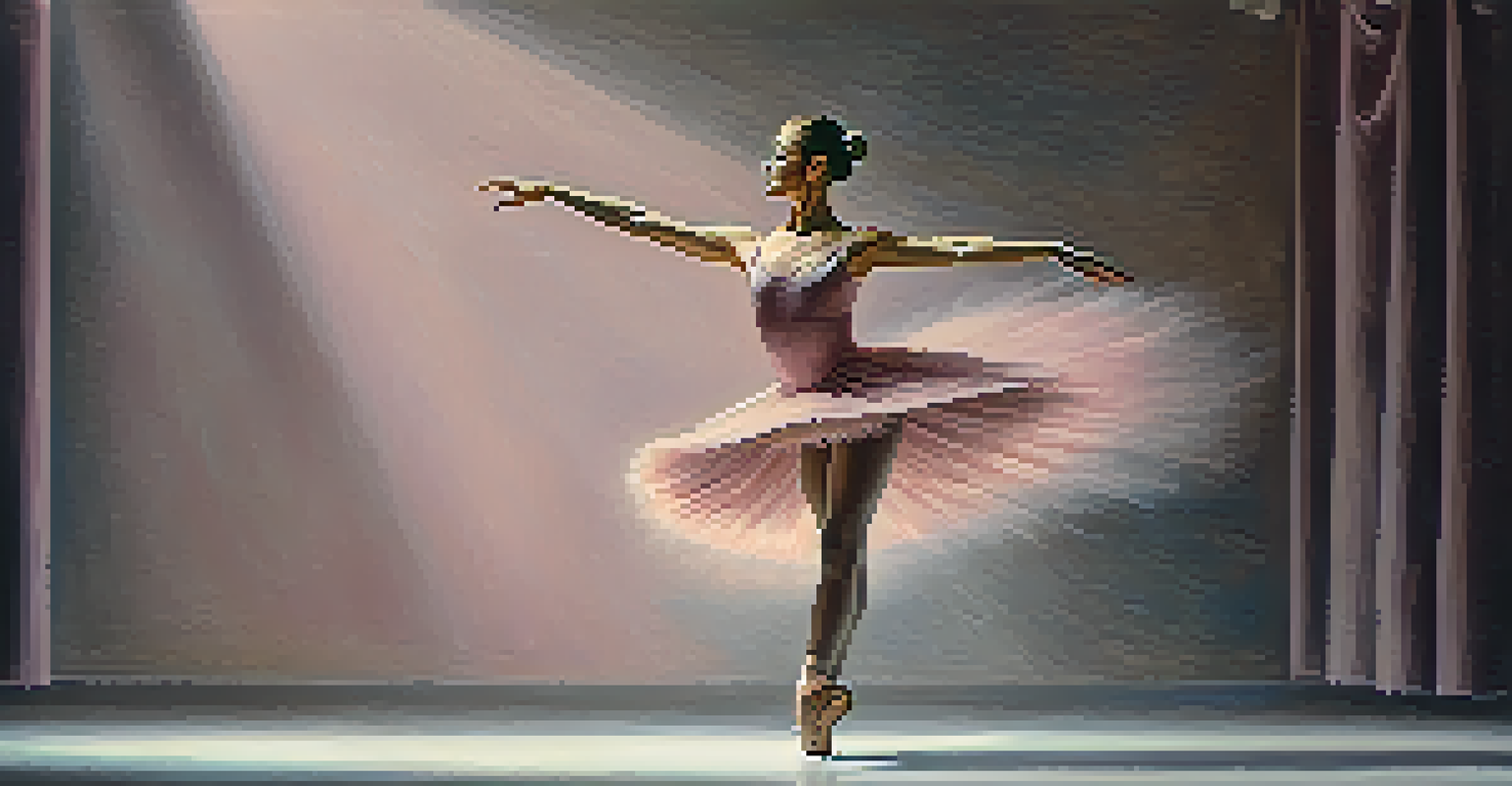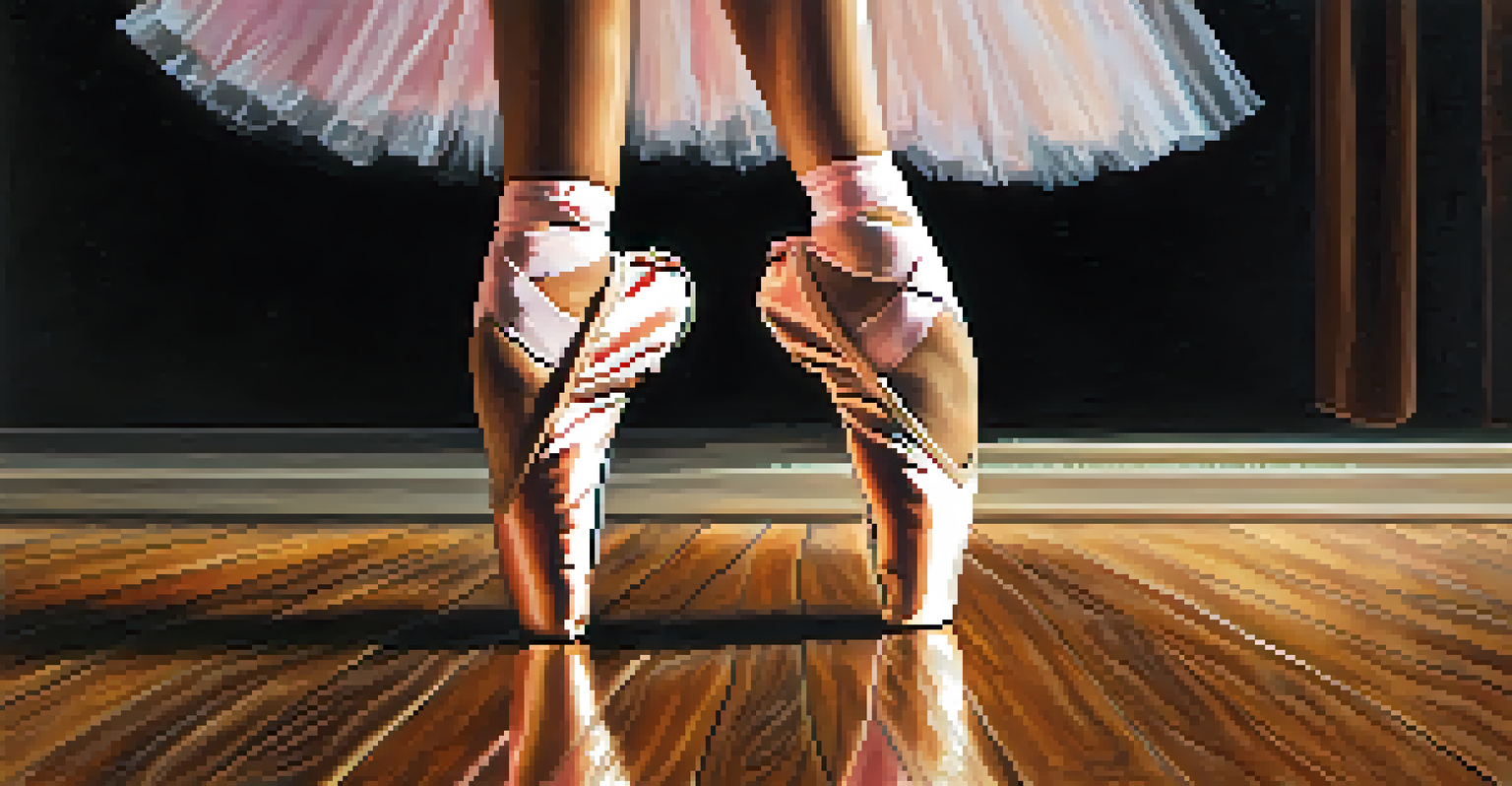In-depth Study of Ballet Positions: A Detailed Guide

Understanding the Five Basic Ballet Positions of the Feet
In ballet, the foundation of movement begins with the five basic positions of the feet: first, second, third, fourth, and fifth. Each position has a unique placement that sets the stage for grace and balance. For instance, the first position involves the heels touching, while the second position has the feet turned out to the sides, providing stability and poise.
Ballet is not just a form of dance; it's a way of life, a discipline that teaches you about control, grace, and the beauty of movement.
These positions are not just random placements; they serve as the building blocks for more complex movements. Dancers often return to these positions to establish control and alignment during their routines. Think of them as the roots of a tree, providing the necessary support for the branches to flourish.
Mastering these basic positions is crucial for any aspiring dancer. They enhance a dancer's ability to perform various steps with precision and artistry, making them indispensable in ballet training.
The Importance of Arm Positions in Ballet Technique
While foot positions are essential, arm positions play a significant role in ballet's overall aesthetic. The placement of the arms can enhance a dancer's lines, create beautiful shapes, and express emotions. There are several key arm positions, including bras bas (low), seconde (to the side), and above the head (elevé), each contributing to the dancer’s overall presentation.

For example, when a dancer holds their arms in second position, it can create a sense of openness and elegance. Conversely, bras bas can convey a feeling of humility or readiness for movement. The arms and hands are like the finishing touches on a masterpiece, turning a simple movement into a captivating performance.
Mastering Basic Ballet Positions
The five basic positions of the feet are essential for establishing control, balance, and artistry in ballet.
Understanding how to align and coordinate arm positions with footwork is vital for dancers. This synchronization not only enhances visual appeal but also supports balance and control during intricate routines.
Exploring the Concept of Turnout in Ballet Positions
Turnout is a fundamental principle in ballet that involves rotating the legs outward from the hips. This positioning allows for greater mobility and a wider range of movement in various ballet positions. Dancers often strive for a 90-degree turnout, providing a strong base for executing jumps and turns.
Dance is the hidden language of the soul.
Imagine an umbrella opening wide; the more it opens, the more coverage it provides. Similarly, turnout creates a broader visual 'canvas' for a dancer’s movements, making them appear more fluid and graceful. However, achieving proper turnout requires a combination of technique, strength, and flexibility to avoid injury.
Practicing turnout is essential for both aesthetic and functional reasons. It not only enhances the beauty of movements but also ensures that dancers can perform advanced techniques safely and effectively.
Key Variations of Ballet Positions: A Closer Look
Beyond the basic five positions, ballet includes various variations that add depth to a dancer's repertoire. Positions like arabesque, attitude, and passé are often used to create dynamic movements and showcase a dancer's flexibility and strength. For example, the arabesque position involves balancing on one leg with the other leg extended behind, creating a beautiful line.
These variations not only enhance the visual appeal of performances but also challenge dancers to develop their skills further. Each position tells a story and conveys different emotions, allowing for artistic expression beyond mere technique. Think of these variations as different flavors in a dish, each adding its unique taste to the overall experience.
Importance of Arm Positions
Arm positions enhance a dancer's lines and expression, playing a crucial role in the overall aesthetic of ballet performances.
Exploring these positions is vital for dancers looking to elevate their artistry. They provide opportunities for creativity and exploration, enabling dancers to find their unique voice within the art form.
The Role of Body Alignment in Ballet Positions
Body alignment is crucial in ballet as it directly impacts a dancer's performance and health. Proper alignment involves maintaining a straight posture, ensuring that the head, shoulders, hips, and feet are in harmony. When a dancer is well-aligned, movements appear effortless and fluid, enhancing both grace and power.
Consider a well-tuned instrument; every part must be in sync for the music to flow beautifully. Similarly, alignment helps to distribute weight evenly, preventing strain on muscles and joints. Dancers who prioritize alignment are less likely to experience injuries, allowing them to dance longer and with greater joy.
Focusing on body alignment during practice can lead to significant improvements in technique. It not only supports the execution of ballet positions but also fosters a deeper connection to the movements themselves.
How Ballet Positions Influence Performance Quality
The way a dancer positions their body can significantly influence the overall quality of their performance. Proper execution of positions allows for better control, balance, and expression, all of which are essential in captivating an audience. A dancer who masters their positions can transition smoothly between movements, creating a seamless flow.
Imagine a painter with a steady hand; each stroke contributes to a masterpiece. Similarly, each position a dancer holds contributes to the art of storytelling through movement. The more confident a dancer feels in their positions, the more expressive they can be during performances.
Body Alignment Impacts Performance
Proper body alignment is vital for executing ballet positions effectively, preventing injuries, and enhancing the fluidity of movements.
Ultimately, the mastery of positions is a journey that enhances not only technical skills but also artistic interpretation. Dancers who invest time in refining their positions will undoubtedly elevate the quality of their performances.
Incorporating Ballet Positions into Dance Training
Incorporating ballet positions into regular dance training is essential for dancers of all styles. Ballet techniques can improve overall strength, flexibility, and coordination, benefiting dancers in genres such as jazz, contemporary, and hip-hop. Many dance studios now integrate ballet foundations into their curriculum to help students develop a solid skill set.
For instance, practicing pliés and tendus not only enhances a dancer's ballet technique but also translates to improved performance in other styles. Think of it as cross-training; the strength and discipline learned in ballet can enhance a dancer’s versatility and creativity in various forms of dance.

By regularly practicing ballet positions, dancers can build a strong foundation that supports their growth. This practice fosters a deeper appreciation for the art form and encourages dancers to explore their unique styles.